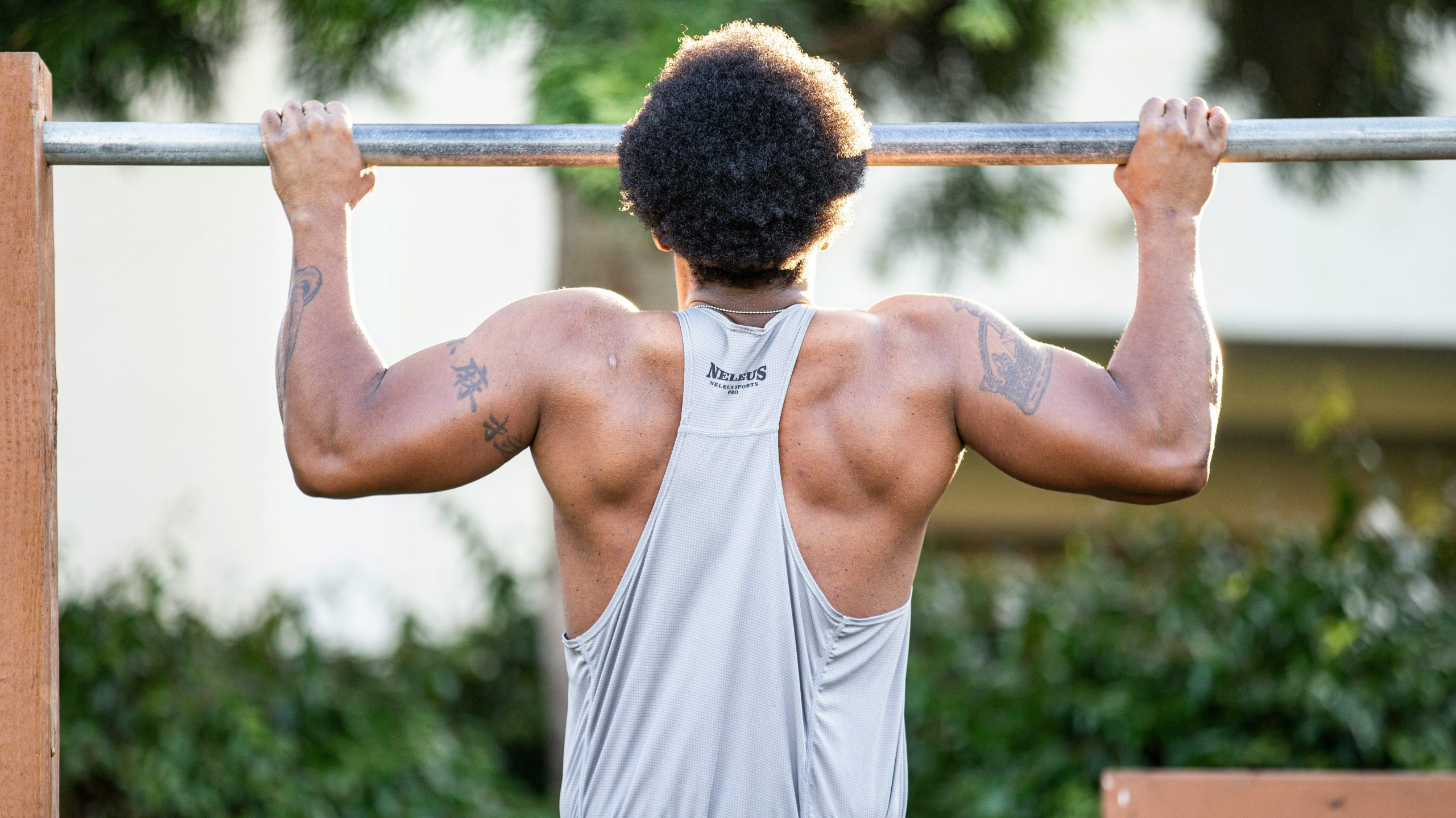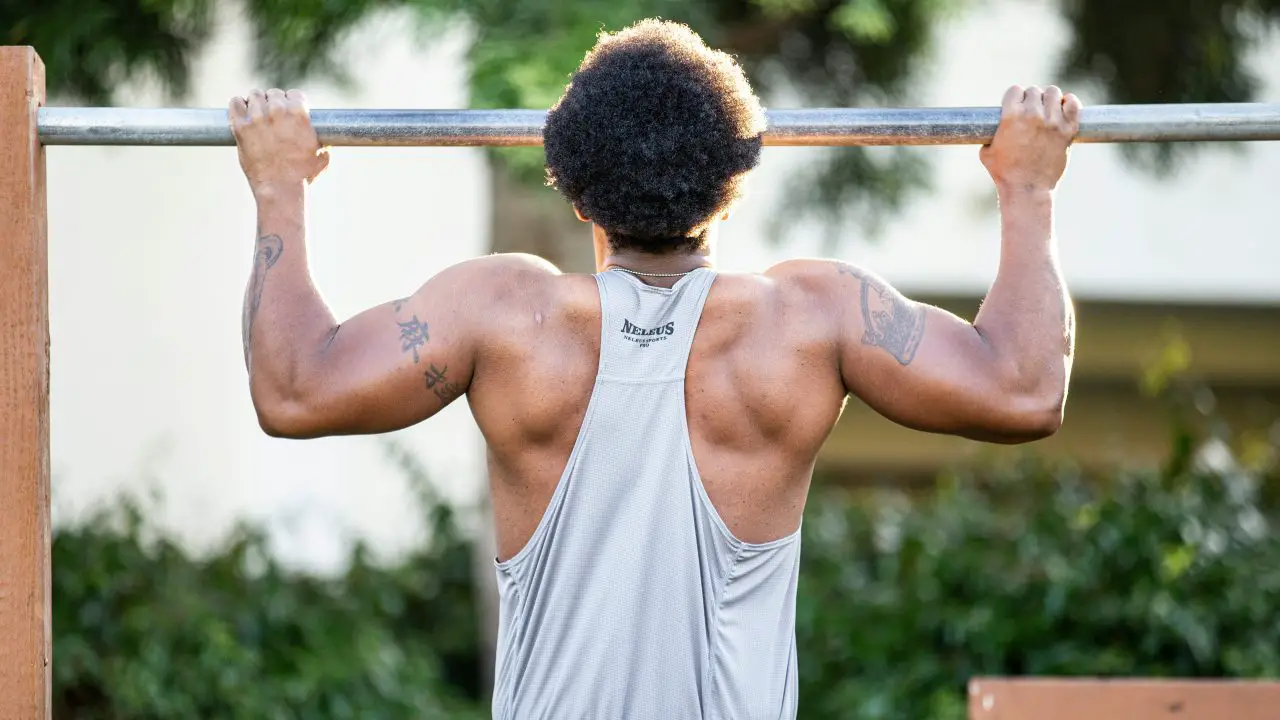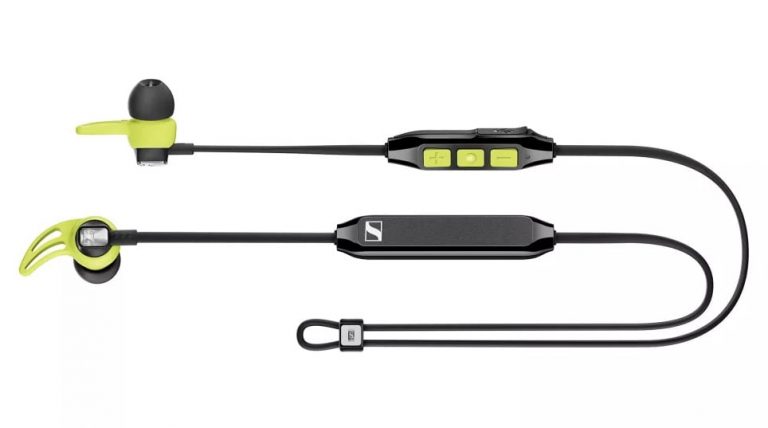How Many Pull-Ups Should I Do Daily? Let’s Figure it Out…

ListedFit is reader-supported. When you buy through links on our site, we may earn a small commission.
Figuring out the ideal number of pull-ups you should do is not only about a magic number but also about understanding your personal fitness level and objectives.
I personally think that pull-ups are one of if not the best exercises for improving your upper body strength and improving muscle tone. But it’s crucial to start at a level that’s suitable for you and progressively build up to avoid injury and maintain proper form.

The key to maximizing the benefits of pull-ups lies in the execution technique. Ensuring correct form during each repetition is more important than the number of pull-ups performed.
I’ve learned that starting with a manageable number of repetitions that allows for strict technique, and gradually increasing that number, can lead to better strength gains and more efficient workouts.
Key Points
- Recognizing your fitness levels is essential starting point for setting realistic pull-up goals.
- Proper pull-up technique is very critical for maximizing the exercise’s benefits.
- Gradual progression in training is going to make a massive difference. You have to always be challenging yourself.
Table of Contents
Assessing Your Fitness Level
Before diving into the specific number of pull-ups we should aim for, it’s essential to evaluate our current fitness level. This takes into account various personal factors such as age and body strength, which are crucial in determining a realistic and safe pull-up goal.
Age Factor and Pull-Up Potential
As I age, my muscle mass and strength might change, which impacts the number of pull-ups I can perform. For men and women, the peak physical condition typically falls within the 20-30 age range.
Here’s a simple breakdown:
- 20s: Generally, this is when muscle mass and grip strength are at their peak, which can lead to a higher number of pull-ups.
- 30s and beyond: There might be a gradual decline in muscle mass, meaning I may have to adjust my pull-up routine to maintain or improve my numbers.
Understanding Body Strength and Weight Impact
To determine how many pull-ups I should do, I need to consider my body weight and muscle mass. The ratio of body weight to muscle strength is a key factor; the more muscle mass I have in relation to my body weight, the easier pull-ups may become.
Here’s how weight and strength come into play:
- Body Weight: Heavier individuals may find pull-ups more challenging because they have to lift more weight with each rep.
- Muscle Strength: A solid foundation of upper body strength, particularly in the back, shoulders, and arms, makes it easier to perform more pull-ups.
For those just beginning, it’s essential to start with a manageable number of pull-ups and gradually increase as strength improves.
It’s not about the number of pull-ups per se but progress and consistent improvement in my fitness level.
Pull-Up Technique Essentials
When I do pull-ups, I focus on several key techniques to maximize the effectiveness of the exercise and reduce the risk of injury. Here’s what you need to know to perform pull-ups correctly.
Form and Full Range of Motion
Pull-ups require precise form to effectively engage the muscles of the back, shoulders, and arms.
I make sure to start each rep with a dead hang, where my arms are fully extended, my scapula is relaxed, and my legs are slightly in front of me to prevent swinging.
As I pull myself up, I aim to bring my chin over the bar and then lower myself back to the starting position to complete the full range of motion.
- Start: Dead hang with straight arms
- Movement: Pull until my chin is over the bar
- End: Lower back to full arm extension
Grip Basics: Pronated, Supinated, and Neutral
I use different grips to target the muscles in various ways:
- Pronated (Overhand): This grip means my palms face away from me and it primarily works my lats and forearms.
- Supinated (Underhand): In this grip, my palms face towards me, which engages my biceps more intensively.
- Neutral: Palms face each other if I’m using parallel bars. This grip offers a balance between bicep and back activation.
To build up grip strength, I make sure my grip is slightly wider than shoulder-width for a pronated grip. This requires considerable strength from my forearms.
Core Engagement and Posture
Keeping a proper posture during pull-ups is not only about my back but also about engaging my core.
I actively tense my abdominal muscles to stabilize my body and prevent it from swinging. This action supports my spine and allows me to transfer power more efficiently from my core to my upper body, providing a solid foundation for the pull-up movement.
- Core: Tightened throughout the exercise
- Posture: Shoulders are pulled back, chest up, and legs straight or slightly bent
Training for Pull-Up Proficiency
Achieving pull-up proficiency involves a structured approach that focuses on building upper body strength and mastering proper form. I’ll guide you through starting with basic exercises, advancing to intermediate practices, and moving on to advanced techniques.
Starting with Basics: The Lat Hang and Negative Pull-Ups
Before aiming for a full pull-up, it’s essential to develop the necessary strength in your latissimus dorsi—the large muscles in your back. Here’s how I start:
- Lat Hang:
- Duration: Begin with 10-30 second holds
- Sets: 3-4
- Work towards increasing your hang time as your grip strength improves.
- Negative Pull-Ups:
- Start at the top of the pull-up motion and lower yourself down slowly.
- Reps: 5-8
- Sets: 3
- This eccentric part of the pull-up is crucial for building strength.
Intermediate Practices: Assisted Pull-Ups and Variations
Once the basics feel more comfortable, it’s time to progress. Assisted pull-ups with resistance bands provide the necessary support to help you move through the full range of motion, and incorporating variations can prevent plateaus.
- Assisted Pull-Ups:
- Use a resistance band looped around the bar and under your feet or knees.
- Reps: 8-12
- Sets: 3-4
- Gradually use lighter bands as your strength increases.
- Pull-Up Variations:
- Try chin-ups (palms facing you) to engage different muscle groups.
- Experiment with grip width to target muscles differently.
Advanced Techniques: Weighted and Eccentric Pull-Ups
Advanced trainees can add weight or focus on the eccentric phase for additional challenge and strength gains.
- Weighted Pull-Ups:
- Attach a weight belt or hold a dumbbell between your feet.
- Reps: 3-5
- Sets: 4-5
- Incrementally increase the weight to avoid injury.
- Eccentric Pull-Ups:
- Focus on the downward motion; aim for a 5-10 second descent.
- Work on increasing the control and time under tension.
Pull-Up Variations to Enhance Your Workout
I’ve found that integrating different variations of pull-ups into my workout routine not only keeps it fresh and challenging but also targets various muscle groups effectively. Here’s how I like to mix things up.
Exploring Grip Variations
- Standard Grip: This is the grip I begin with. I place my palms facing away and spaced about shoulder-width apart. It’s great for engaging my lats and overall back muscle development.
- Chin-Up Grip: I often switch to this grip, with my palms facing towards me. This grip places more emphasis on my biceps and the upper part of my back muscles.
- Wide Grip: When I want to challenge my upper-body workout further, I go for a wider grip. This places more stress on my upper lats and shoulders.
- Neutral Grip: Using this grip, where my palms face each other, I’m able to focus on my central back muscles. It’s also a bit easier on my wrists.
- Mixed Grip: Whenever I feel like targeting different muscles on each side of my body, I use a mixed grip. One palm faces away and the other toward me. It adds a nice variety to my pull-up routine.
Incorporating Compound Movements
- Pull-Up & Knee Raise: I combine a pull-up with a knee raise to hit my abs and lats simultaneously.
- Pull-Up & Leg Raise: For an added lower body exercise, I integrate a leg raise to strengthen my core and lower abs during the pull-up.
- Lat Pulldown and Row: I sometimes substitute pull-ups with the lat pulldown machine. Then, I follow it with rows for a comprehensive back and biceps workout. I do this when I want to reduce the strain from my body weight.
Additional Considerations for Optimal Performance

When we talk about mastering pull-ups, we often focus on the act itself. But achieving peak performance is a multifaceted job. Let’s dive into the specific practices that help complement pull-up training and enhance overall upper body strength.
Balancing Your Routine with Pushing Exercises
While my back muscles are diligently engaged during pull-ups, I make sure to incorporate pushing exercises. These exercises include push-ups and bench presses to work on my pecs, deltoids, and triceps. This is crucial for avoiding muscle imbalances and maintaining good posture. A balanced workout routine promotes symmetrical muscle development and overall upper body strength.
Diet and Recovery in Muscle Development
I recognize that my muscle mass and strength gains partly depend on my nutrition and recovery times. To support hypertrophy, I ensure my diet is rich in proteins and calories consistent with my fitness goals. After intense sessions targeting my core muscles and back, adequate rest is essential for muscle repair and growth. This includes sleep and rest days.
Setting Realistic Goals and Milestones
I set clear, achievable goals for my pull-up performance based on pull-up standards and my current fitness level. Whether it’s improving my chin over the bar endurance or increasing the number of pull-ups per set, I establish milestones and practice with dedication. To maintain motivation, I celebrate small victories. I recognize that consistent practice leads to improvement in pull-up performance for everyone, including adults, children, and teens.
Frequently Asked Questions
Sometimes when I’m discussing fitness, I get asked a lot about the specifics of pull-up performance. Here are some of the most frequent questions I encounter:
What is the average number of pull-ups individuals can perform by age group?
The average number of pull-ups tends to vary greatly by age group. For example, teenagers may range from 1-5 pull-ups as they’re still developing strength. Meanwhile, young adults tend to peak with higher averages. Individuals over 40 might see a decline due to loss of muscle mass.
How can women increase their pull-up count?
For women looking to increase their pull-up count, I suggest starting with pull-up specific training routines. This could include assisted pull-ups, negative pull-ups, and strength training exercises for the upper body such as lat pull-downs or rows.
What quantity of daily pull-ups is recommended for strength building?
To build strength through daily pull-ups, I recommend starting with a manageable number like 3-5 pull-ups daily. Then, gradually increase the count as your strength improves. Consistency is key, but it’s also important to allow time for muscle recovery.
At what point can someone’s pull-up count be considered above average?
An above-average pull-up count could be seen as performing more than 15 pull-ups in one set for men, and more than 7 for women. These figures are just general benchmarks and can vary based on fitness levels and individual conditioning.
How does pull-up performance vary between men and women?
Generally, men have more natural upper body strength and muscle mass. This can lead to higher pull-up performance on average. However, this isn’t strictly the case for all individuals. Women can reach high levels of pull-up performance with training and dedication.
What is an effective pull-up routine for teenagers?
An effective pull-up routine for teenagers should incorporate a mix of assisted pull-ups and strength training. It should also focus on proper form and gradual progression. Since their bodies are still developing, teenagers need to prioritize safety and proper technique.
Author
-
Stuart Patrick is a health and fitness lifestyle journalist who writes for ListedFit.com.
“I've spent a lot of time trying to get in shape and change my body and I realised there are so many untruths in the health and fitness industry that can slow down or stop your progress, so I share my knowledge and experience to help others to cut through the BS.”
Latest entries
 NutritionJune 5, 2024Shilajit Products
NutritionJune 5, 2024Shilajit Products FitnessMay 14, 2024Donate Blood
FitnessMay 14, 2024Donate Blood GearApril 6, 2024HOKA Kawana 2 Review – Are These The Best HOKA Gym Shoes?
GearApril 6, 2024HOKA Kawana 2 Review – Are These The Best HOKA Gym Shoes? CrossFitApril 4, 2024How Many Pull-Ups Should I Do Daily? Let’s Figure it Out…
CrossFitApril 4, 2024How Many Pull-Ups Should I Do Daily? Let’s Figure it Out…
Affiliates:
This post may contain affiliate links that at no additional cost to you, the site may earn a small commission. We only recommend products we would use ourselves and all opinions expressed on this site are our own.
General Advice:
The information provided in this article is for general informational purposes only. It is not intended as a substitute for professional advice. Always consult with a qualified healthcare professional before starting any new diet, exercise program, or making changes to your health routine.
Accuracy Advice:
While we strive to provide up-to-date and accurate information, the content in this article may not reflect the most current research or medical guidelines. We encourage readers to do further research and consult with professionals for more personalized advice.
Our Recommendations:
The products and services mentioned in any of our articles are recommended based on our independent research and personal experience. We are not sponsored by any company. We aim to suggest products and services we believe are of high quality and could be beneficial to our readers.






